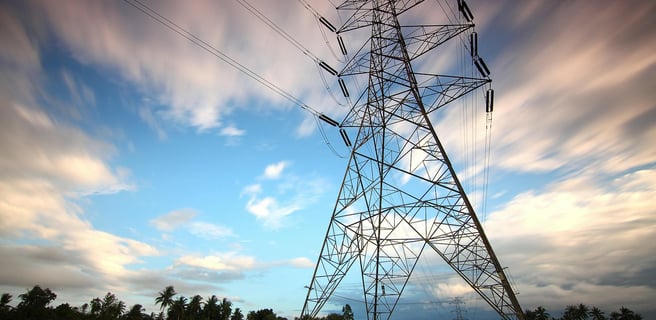
6 Things that will make your EV Charging Project more Expensive
Don't let these monsters jump out at you.
BUSINESSESSTRATAS


I'm Considering Adding EV Charging, What Should I Look Out For?
Introduction
How much does an EV charging project cost? That's a difficult question to answer, but I can tell you the factors that will make it more expensive. If your location has any of the factors discussed below, you can be sure the price of your project will increase. The only definitive way to determine the true cost of an EV charging project is to have an electrician visit and provide a quote. However, knowing the information below will help you prepare with questions and potential solutions. You can use the details below to address the pricing and potentially lower the amount by asking for alternatives.
Read below to uncover the monsters that might jump out at you.
1. Electrical Room Distance
Copper Conduit & Labour
This is likely the most significant factor determining the cost of your EV charging project. The further your electrical room is from the location of the EV chargers, the more expensive the project becomes. Every additional foot makes a difference. This is because the conduit wiring is made of copper, which is very expensive. Additionally, the labor cost for electricians to install, run the wiring, and mount it to the walls or ceilings is not cheap.
Coring
In addition, they'll most likely need to drill (core) holes through the concrete floors or walls to reach the electrical room. In a perfect world, you'll want the electrical room right beside where the EV chargers are going. If the electrical room is on a different floor, or even a few floors above or below the EV charging location, you can expect the installation costs to double or triple.
Further Distance Requires More Energy
Another thing people don't consider is that the longer the conduit run, the more power is required to pump through the wires to reach the chargers. Electricity loses strength the further it travels, so more electricity will be needed to sustain its strength by the time it reaches the chargers. If your electrical room is very far away, it may require you to upgrade the electrical capacity to supply enough power to achieve the kilowatt output (speed) you desire for the EV chargers.
2. Electrical Capacity
Limited Power
Installing EV Chargers requires consideration of the building's electrical infrastructure. It's not as simple as attaching a charger to a wall. The building's power availability is crucial. More than just single-phase power is needed; 3-phase power is necessary for significant charging speed. It's also important not to exceed 80% of the building's available amperage to prevent triggering a circuit breaker trip, which could lead to a power shutdown.
Room on the Panel
EV chargers require their own dedicated circuits on an electrical panel. If your panel is full or doesn't have enough room for an additional circuit for the EV chargers, you'll need to install a new panel solely dedicated to the chargers, or use a sub-panel, which is a smaller panel beside your main panel.
3. Poor Cell Service
If your location has poor cell service or a weak Wi-Fi connection, this may add to the cost. Level 2 EV chargers need to be connected to the internet, and this can be difficult when they're installed underground. Underground parkades are notorious for having poor cell service, and if this is the case, you may be required to add new routers or even hard-wired ethernet connections.
Cellular Antenna
Concrete pillars also don't help. If there are layers of walls between the Wi-Fi router and EV chargers, this may disrupt the signal. One surefire solution is to mount an antenna outside the parkade and run wiring directly to the chargers. The antenna will boost the cellular signal and should be very reliable for the EV chargers.
4. Number of EV Chargers
Cost of the EV Chargers
As you can imagine, the more EV chargers you order, the more expensive the project will be. More chargers will increase the price of the project for a few reasons. Obviously, the first is that you'll have to pay for more physical chargers, but the installation will also become more expensive.
Coring through Concrete
The main reason the installation price increases is because you'll need to "core" larger holes in the concrete to run the wires through the walls/floors to reach the electrical room. Also, faster EV chargers (with higher kilowatt output) require more electricity to run through the wires. More electricity requires larger conduits, so they'll be thicker than the thinner conduits used for slower EV chargers. This is similar to a garden hose: the wider the hose, the more water can flow through.
Future Expansion
It's always a good idea to accommodate for potential additions in the future. You may want to ask your electrician to oversize the coring holes and conduit to accommodate more EV chargers in the future if you decide to expand.
5. Two Ways to Mount the EV Chargers
There are two ways EV chargers can be mounted - Pedestal Mounted or Wall Mounted. Pedestal Mounted EV Chargers are substantially more expensive to install and are much more complicated.
Pedestal Mounted EV Chargers
Pedestal mounted EV chargers mean the EV charger is sitting on a metal stand, similar to the parking meters you’ll find downtown. Installing pedestal mounted EV chargers requires digging up the concrete underneath to run the electrical wires underground. This is expensive. You’ll also need to obtain building permits which adds to the expense and time required.
Wall Mounted EV Chargers
Wall mounted EV chargers install costs are substantially less expensive. Installing wall mounted EV chargers is much simpler. The wiring does not need to go underground. It will just run along the wall or sometimes the ceiling. Wall mounted EV chargers are more common indoors, such as in underground parking, but there are applications where they can be mounted on the exterior of the building as well. If possible, I’d highly recommend choosing wall mounted chargers if your building allows for it.
6. Ceilings
Exposed Ceiling
Indoor chargers often require wires to run from the electrical room to the EV chargers, usually mounted to the ceiling. This can be problematic if the building has an exposed or non-solid ceiling. In such cases, installing “racking" may be required. Racking is essentially metal plates that hang down from the ceiling and can support the wiring. Installing racking requires considerable labor, and will increase your project costs substantially.
Ceiling Height
Also, if the ceiling is very high and not easily accessible by a ladder, the electrician will most likely need to rent a "lift". A lift is similar to a mini forklift but designed to support one person. It's electric, on wheels, and will lift the electrician up close to the ceiling to install the conduit. Keep in mind, lifts aren't small and when they're sitting in the middle of your parkade, they may obstruct residents from driving in and out easily. The electrician will bill you for the cost of renting the lift.
Conclusion
The purpose of this article was not to deter you from considering the installation of EV chargers at your location. On the contrary, it was intended to equip you with the knowledge to be proactive and overcome these hurdles, find solutions, and save money. As the old expression goes, there's more than one way to skin a cat, so remember there are always alternatives to any issue that may arise. Anticipating these problems ahead of time will assist you in your conversation with the electrician and hopefully help you find ways to reduce the project cost. Knowledge is power, so the more you know, the better you can navigate.
As you know, my main goal is to help you save time and money, so I'm here if you need anything.
Been a pleasure,
Strong Energy












